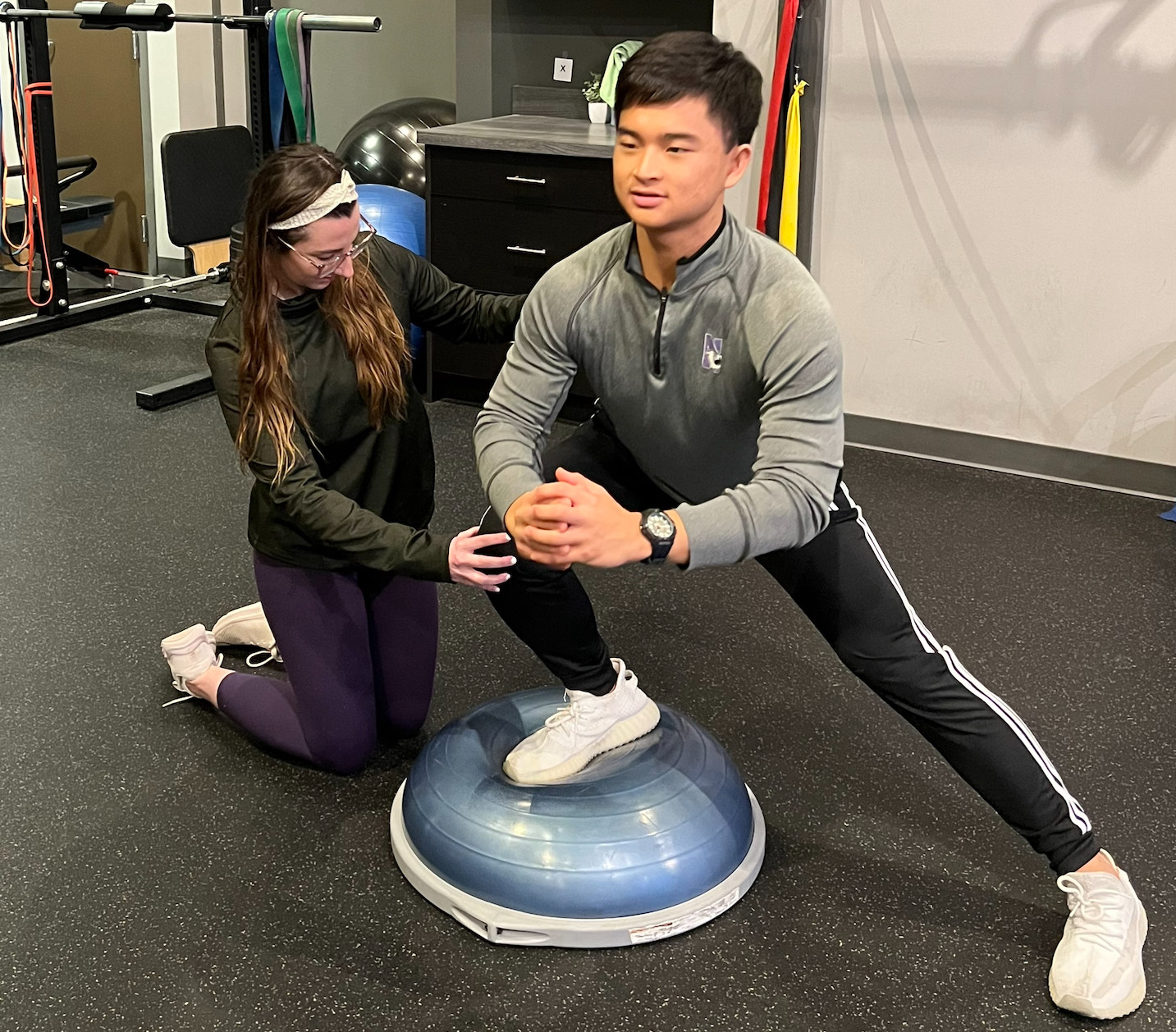What is a Physical Therapist Assistant (PTA)?

When attending physical therapy, you enter a world of rehab aides, office coordinators, and therapists: the ones that treat you.
Physical Therapists (PT) and Physical Therapist Assistants (PTA) are the only two types of therapists licensed to perform physical therapy intervention! The biggest difference between PTs and PTAs is that PTs will always be the ones to perform the initial evaluation and create the patient’s plan of care. This diagnostic portion of the appointment can only be done by a licensed physical therapist. All care following the initial evaluation can be completed by either the PT or PTA! The PTA will always work under the supervision of a PT, however, is skillfully capable of completing full treatment sessions with each patient.
PTAs CAN:
- Treat patients for all follow-up appointments
- Take measurements/perform special tests to determine progress
- Perform manual work/create exercise plans for patients
- Complete patient education and provide home exercise plans
Common PTA Misconceptions:
- PTAs are just aides. – WRONG! Aides are not licensed to provide therapy to patients but are utilized by PTs and PTAs to assist with activities/exercises
- PTAs are not licensed. – WRONG! PTAs must pass a state-based licensure exam to become board certified and licensed to provide physical therapy
- PTAs are not as skilled to treat. – WRONG! PTAs at React PT are equally trained in the Reavy method along with being educated in intervention/progression/analysis techniques to best treat the patient’s needs
Why can’t PTAs perform evals you ask?
Physical therapists earned a DPT or Doctoral Degree in Physical Therapy. Which required a bachelor’s degree and a slew of prerequisites for entry and successful completion of an additional 3-year graduate program from an accredited university in order to sit for the National Licensure Exam (NPTE). This Doctoral Degree provided them with the knowledge and autonomy to diagnose.
PTAs go through a rigorous two-year program, obtaining an associate’s degree in applied science- Physical Therapist Assistant. Upon passing the IDFPR state board exam, we then become licensed to perform all physical therapy interventions.
The focus is on treatment:
The PTs main concern is the diagnosis and developing a rehab plan of care tailored to the patient’s prognosis. Following this, the PT can continue with skilled intervention to treat the patient.
A PTAs main focus is following through with that plan of care and just like the PT, continuing with skilled intervention to treat the patient and progress them from point A to point B.
There is no difference in the intervention phase of rehab between the PT and PTA! We will work on manual work, modalities, exercise, stretching, home exercise plans, patient education, and more to improve the patient’s outcomes.
Still, confused or concerned?
I like to use the analogy of an MD (doctor) to a PA (physician’s assistant). More times than not, you are seeing a physician’s assistant for follow-up appointments/check-ups! This is so that the MD can focus on evaluating new patients, who are then scheduled with the PA for their follow-up appointments. This usually allows more time for the patients to work on/address further concerns.
This is the same concept for physical therapy. To allow for additional personalized treatment time, the patients can be seen by a PTA to continue advancement in the rehab process. Become stronger than yesterday!
You will get the same type of care following up with a PTA as you would a PT. We are another licensed skilled clinician to help you in your rehab process!